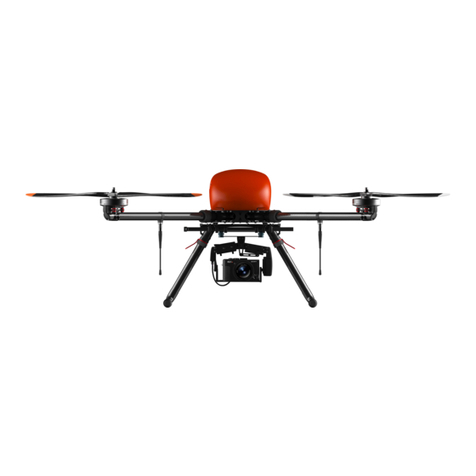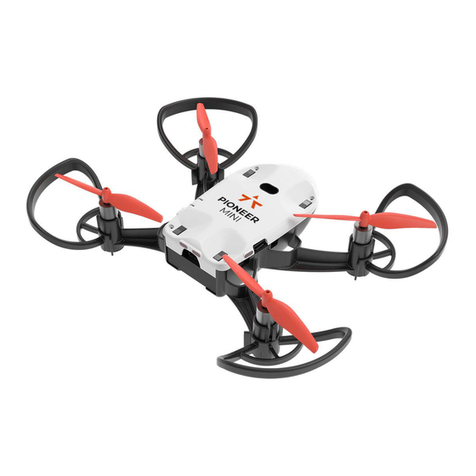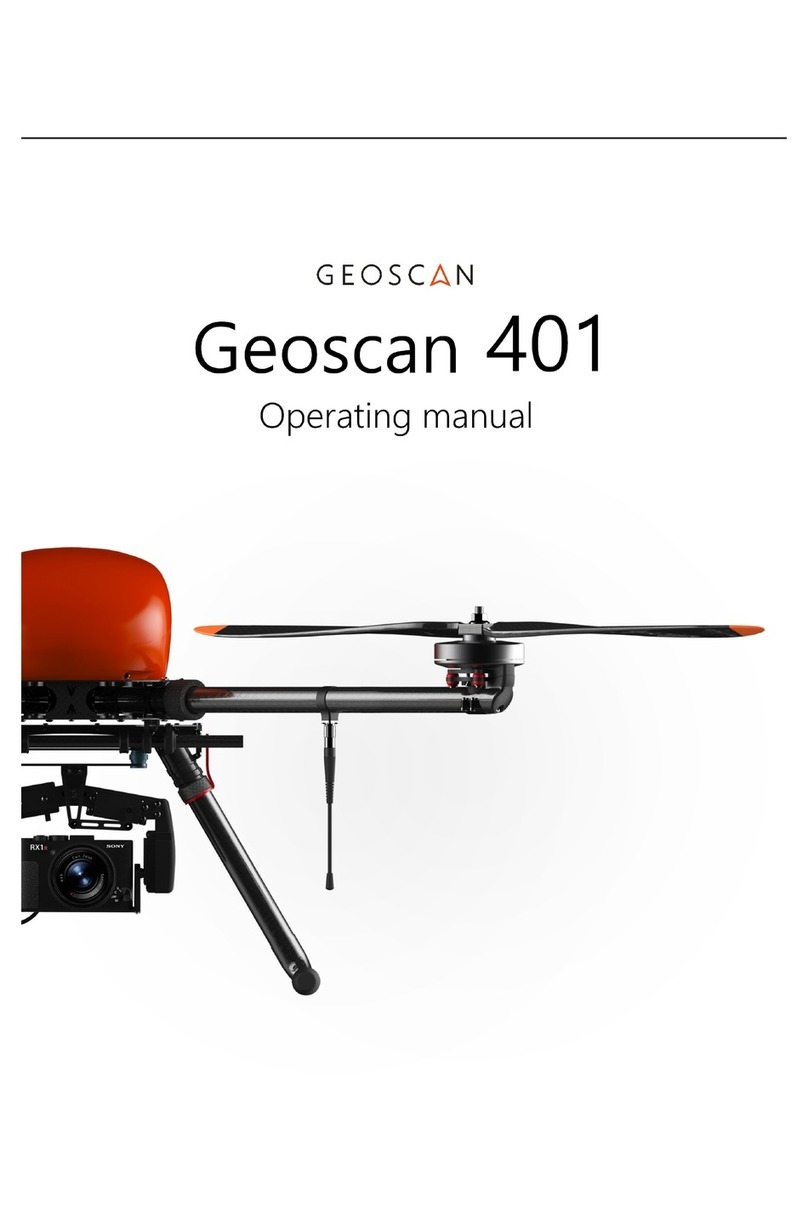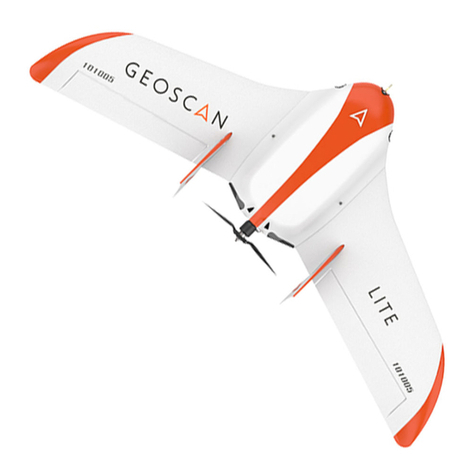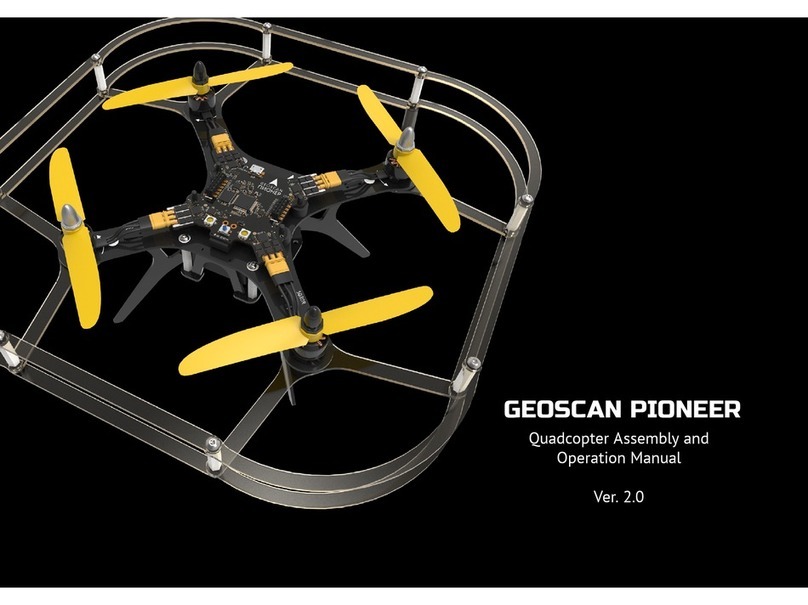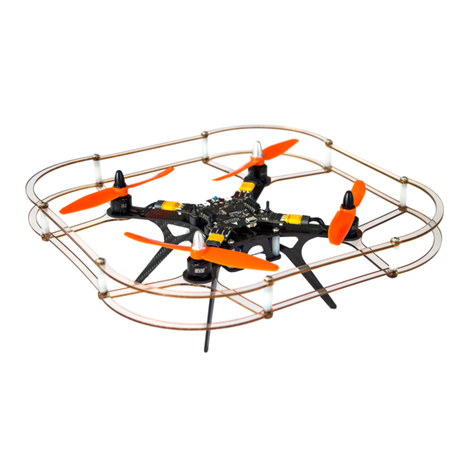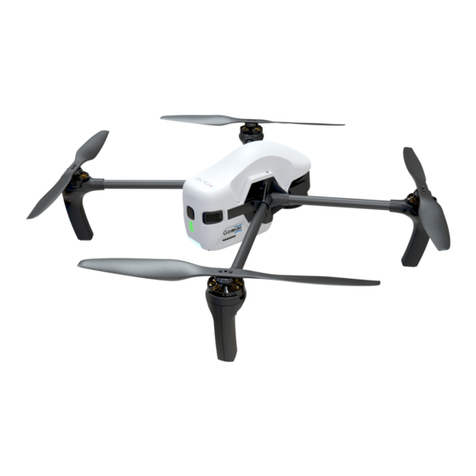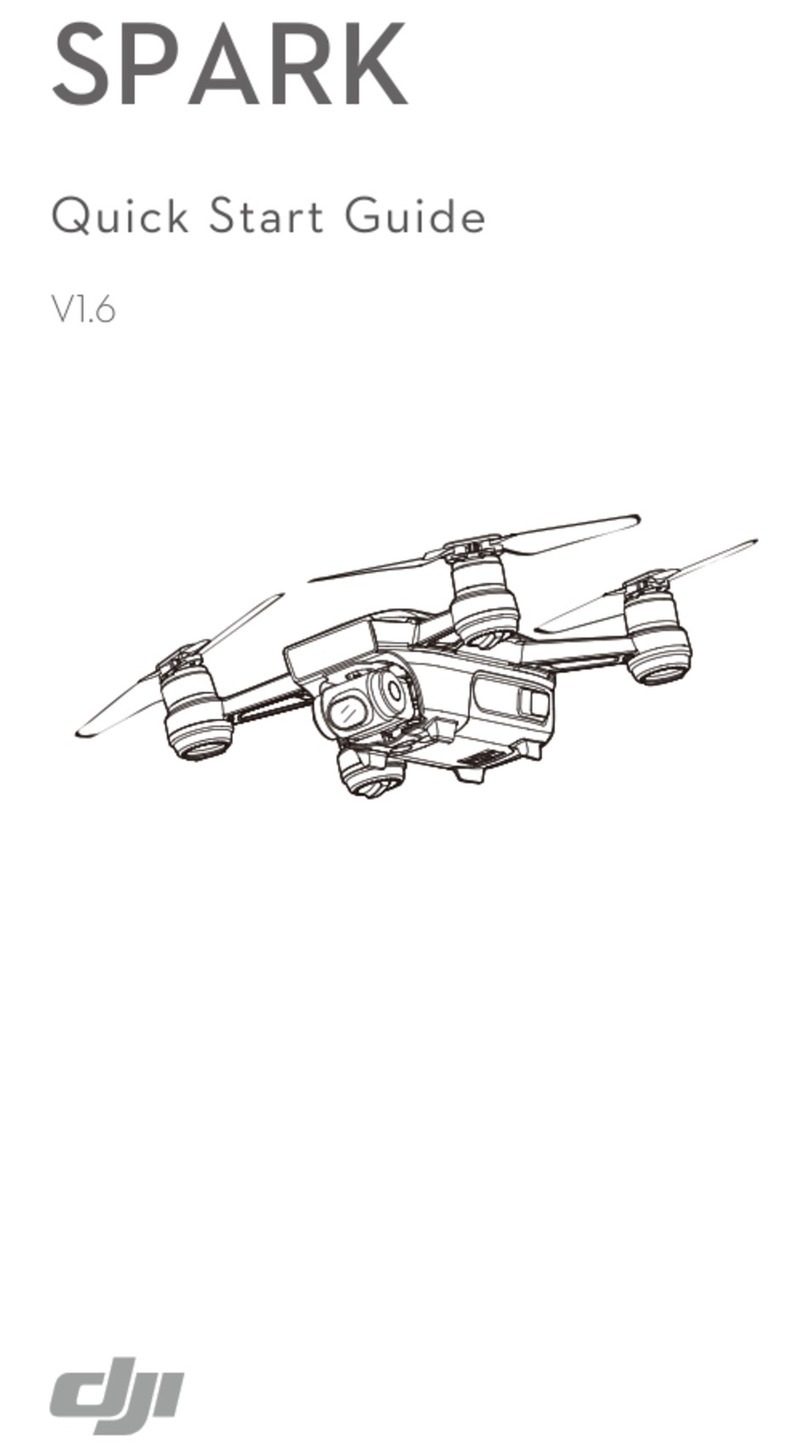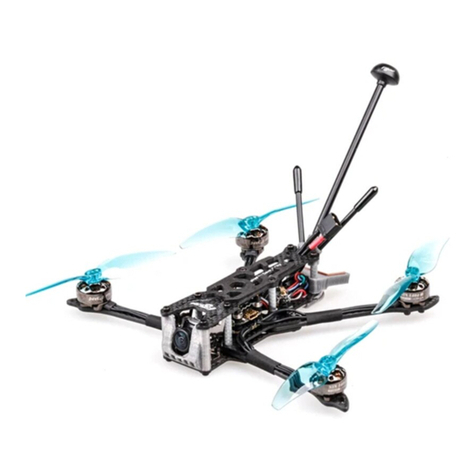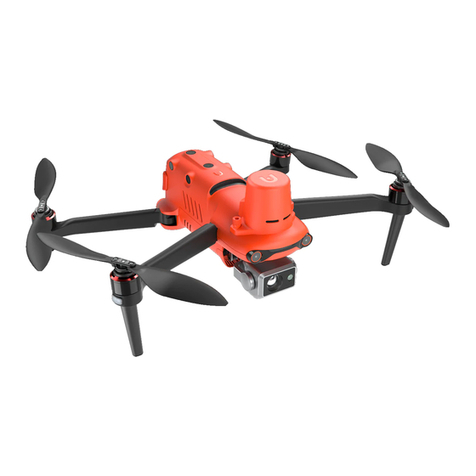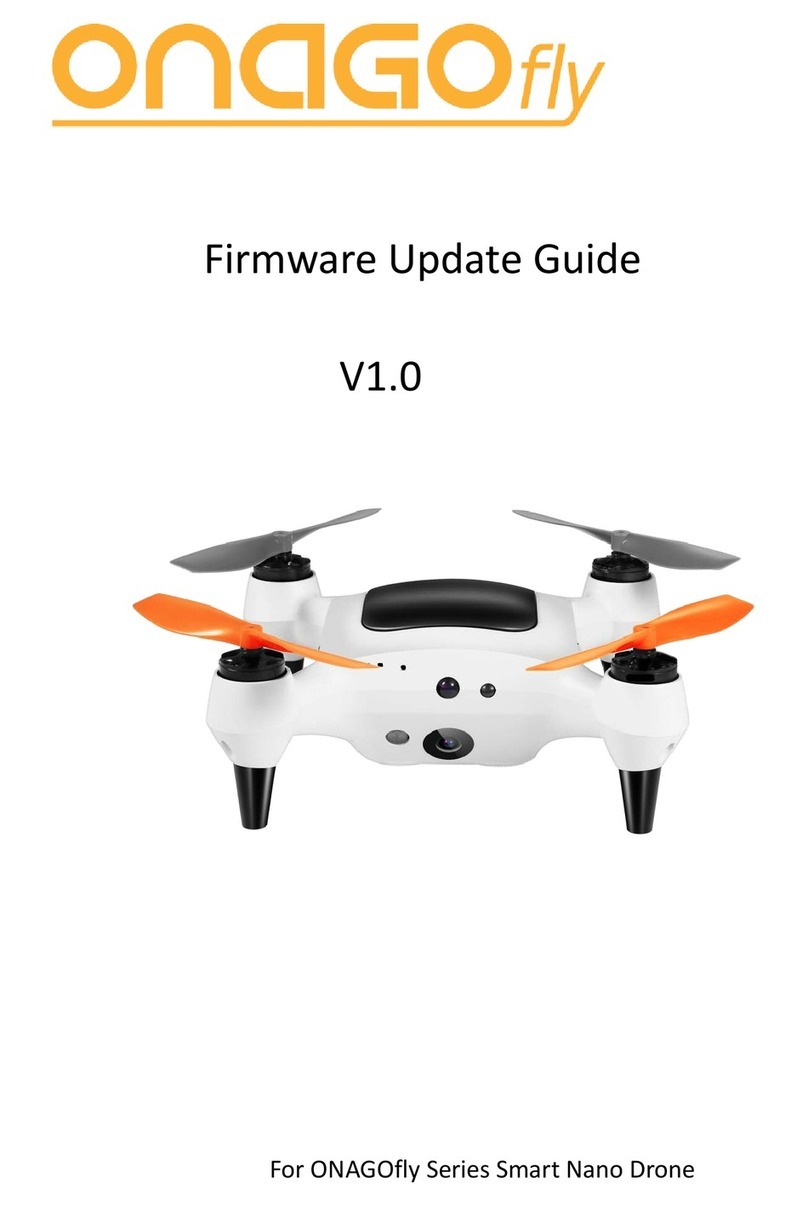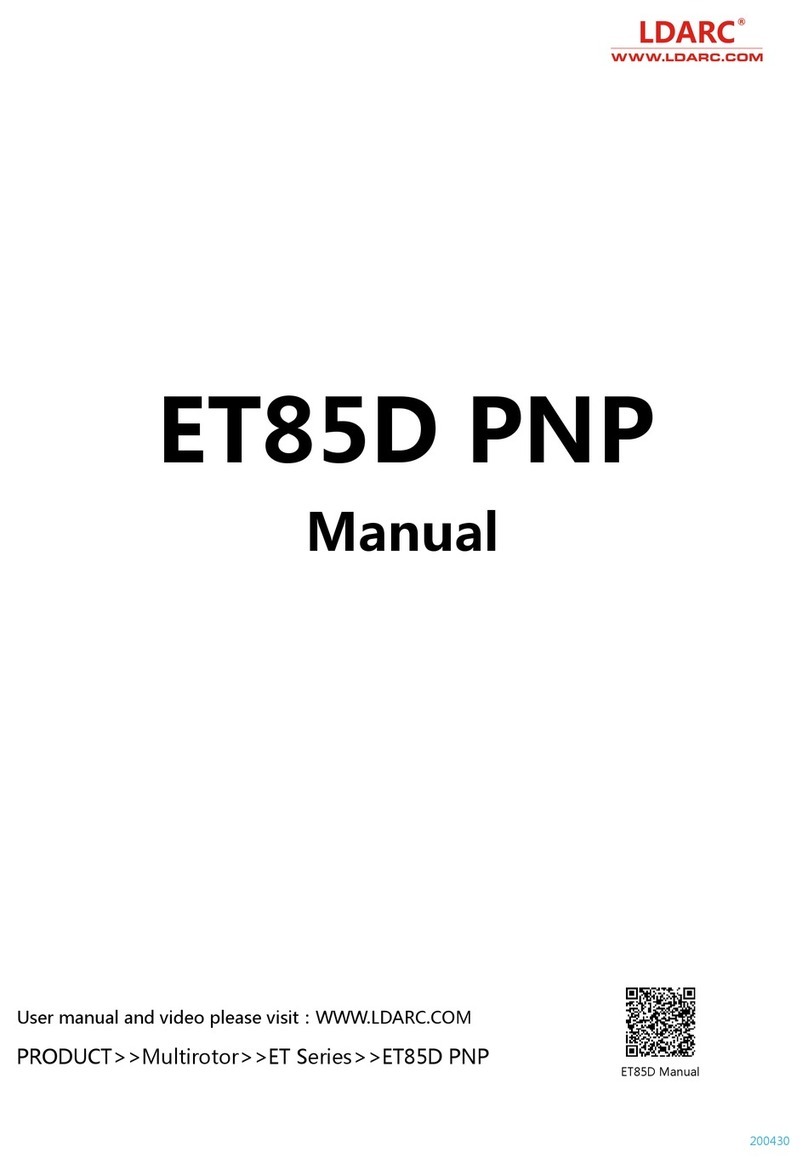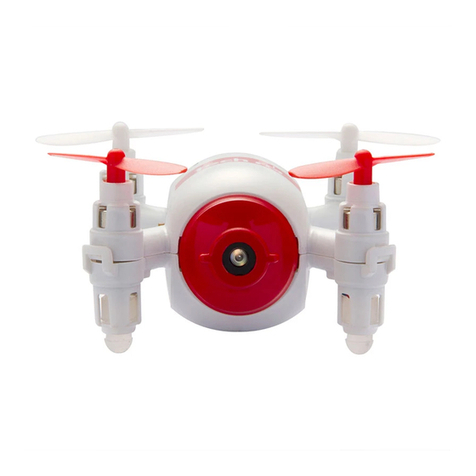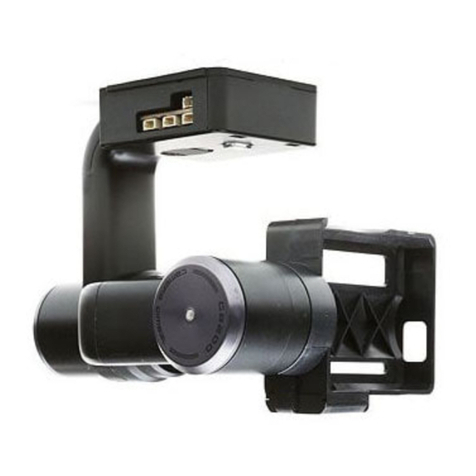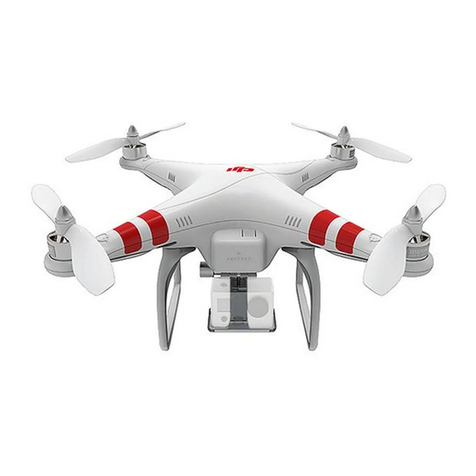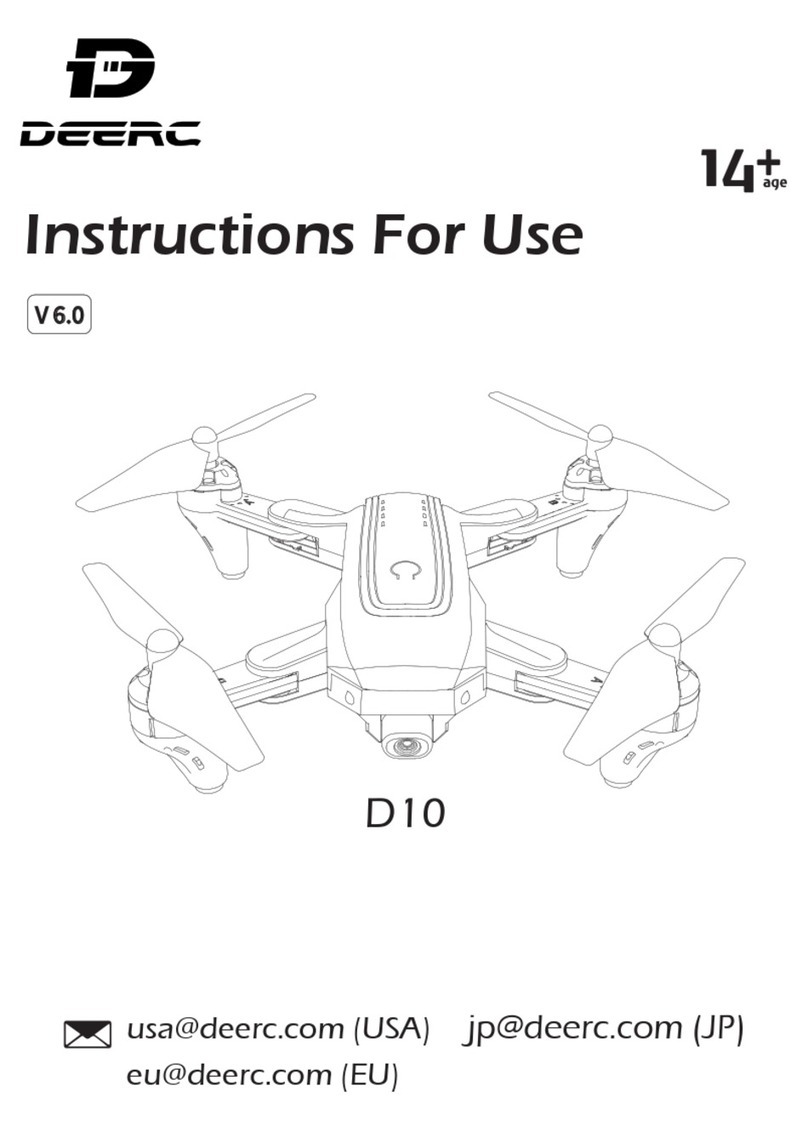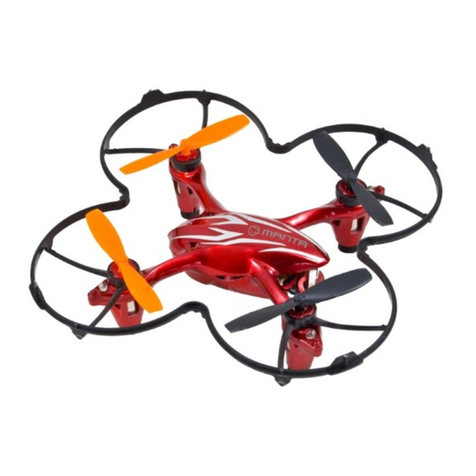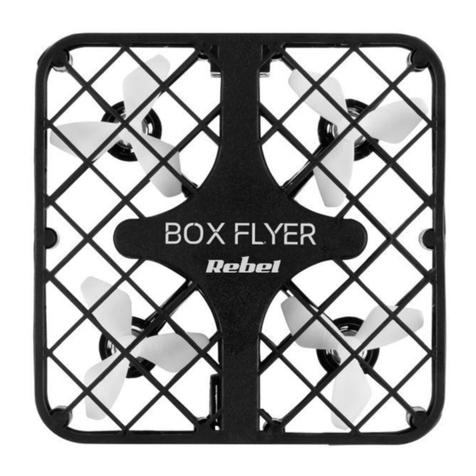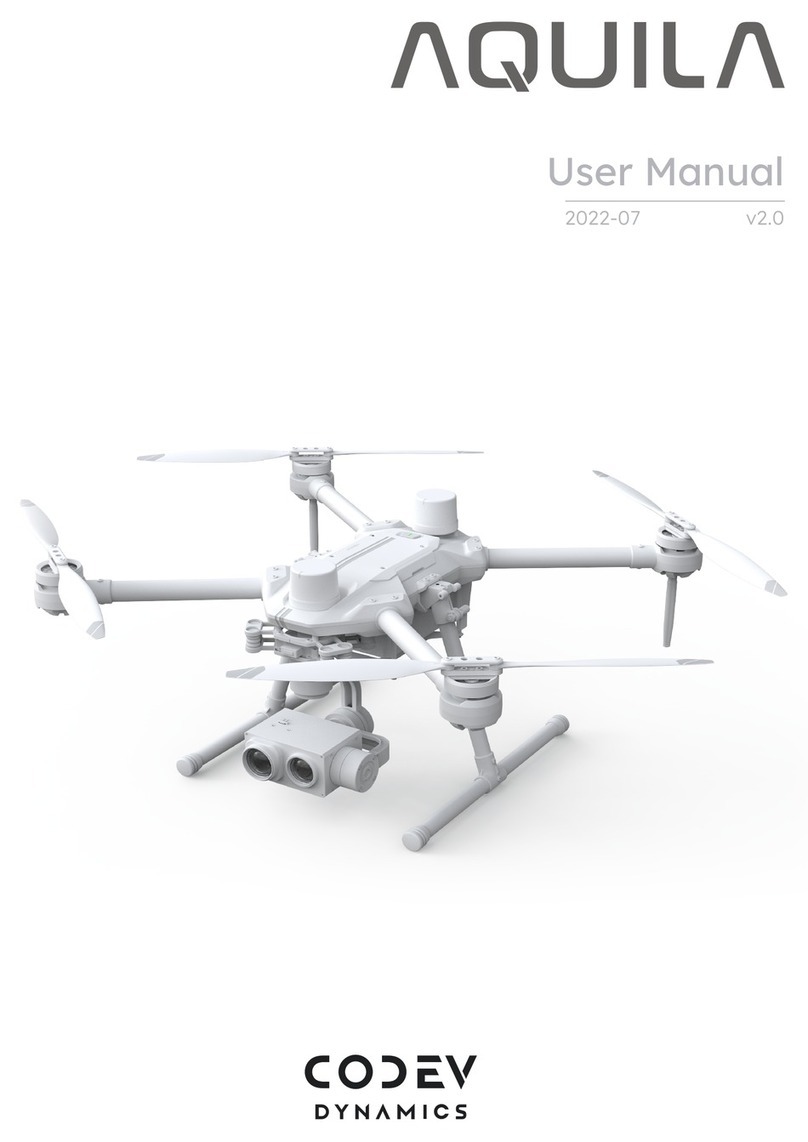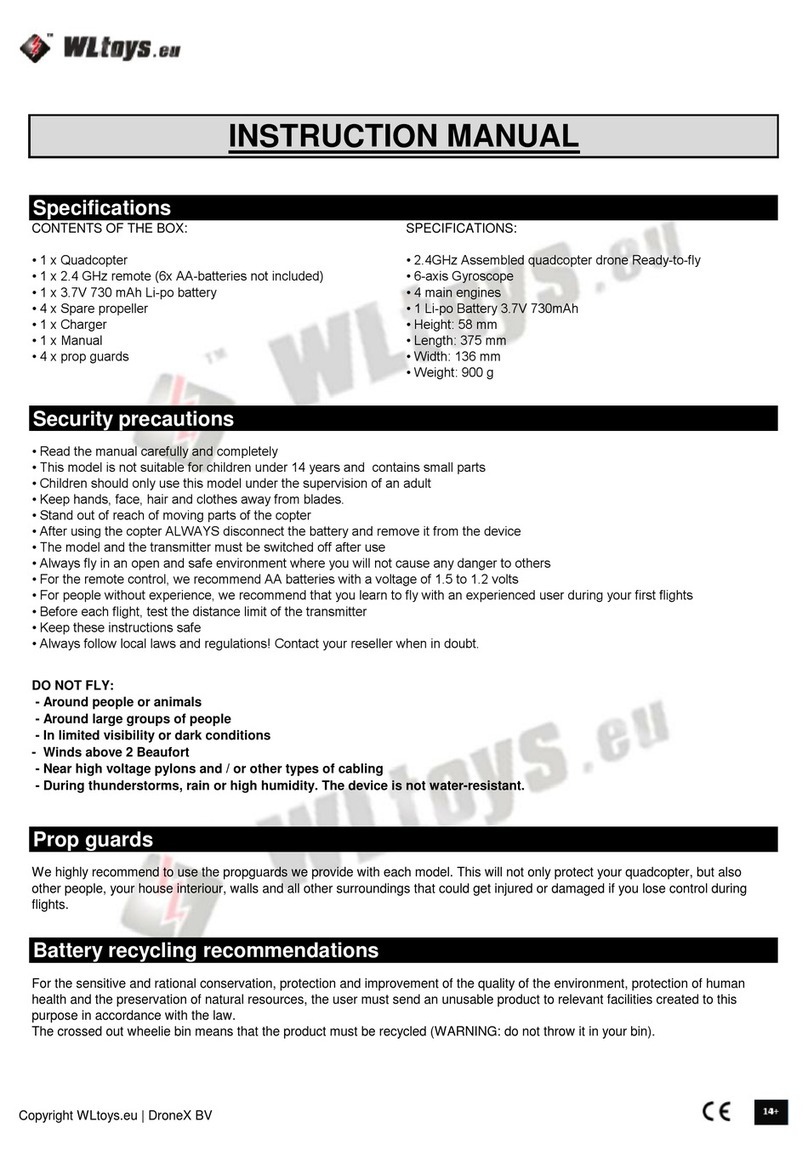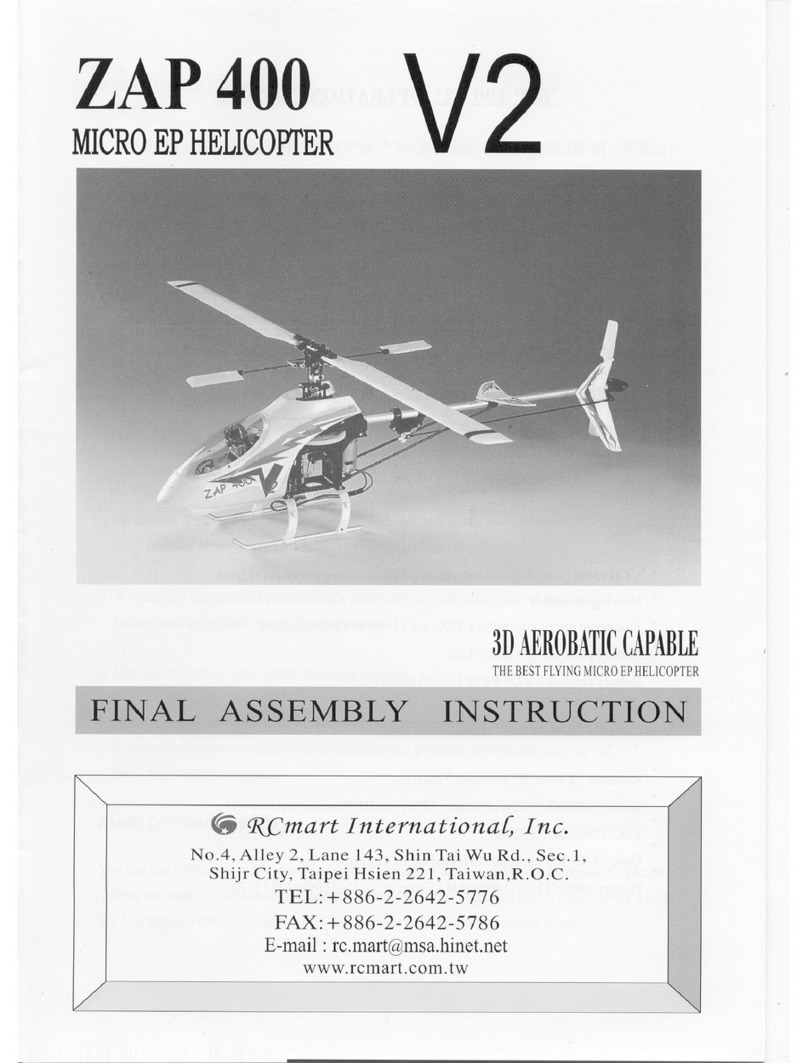Geoscan Lite User manual


CONTENTS
1 General information 1
1.1 Kit ................................................. 2
1.2 Specifications .......................................... 2
1.3 Maintenance service ...................................... 3
1.4 Storage .............................................. 3
2 Safety rules 4
2.1 Operational restrictions ..................................... 5
3 UAV 6
3.1 Parts ............................................... 6
3.2 Assembly ............................................. 6
3.3 Parachute system ........................................ 10
3.4 Installing the parachute in the UAV ............................... 15
4 Ground Control Station 19
4.1 Kit ................................................. 19
4.2 Deployment and setup ..................................... 19
5 Launcher 21
5.1 Assembly ............................................. 21
5.2 Preparation to UAV launch ................................... 26
5.3 Rules of use the rubber cords ................................. 26
6 Camera Settings 27
6.1 Sony DSC-RX1RM2 Settings .................................. 27
6.2 Sony DSC-RX1 Settings .................................... 31
6.3 Sony A6000 Camera Setup ................................... 33
6.4 Sony A6000 NIR Modification Setup .............................. 36
7 Charger and battery 37
7.1 Safety requirements ....................................... 37
7.2 Battery charger preset ...................................... 38
7.3 Battery charging ......................................... 41
7.4 Lithium polymer (LiPo) battery recommendations on the use ................ 41
7.5 Battery check .......................................... 42
7.6 Storage and discharge ..................................... 42
7.7 Battery recycling ......................................... 42
8 Geoscan Planner 43
8.1 Preset ............................................... 43
8.2 Flight task creating ....................................... 45
8.3 Areal surveying ......................................... 47
8.4 Linear surveying ......................................... 54
8.5 Hop ................................................ 55
i

CHAPTER
ONE
GENERAL INFORMATION
Geoscan Lite – compact aerial survey system.
Application
Geoscan Lite is designed to obtain georeferenced photos of objects and aerial photography.
The aerial data can be used for:
• Terrain evaluaton;
• Aerial photography with precise time stamps for georeferenced images;
• Orthophotos and digital terrain models creation;
• Altitude maps creation;
• 3D terrain models;
• Volumetric calculation for quarries and fills
1

1.1 Kit
• Geoscan Lite unmanned aerial vehicle (UAV)
• UAV transport bag
• Launcher in transport bag
• Customized camera
• Battery
• Radio modem with antenna
• Battery charger
• Geoscan Planner software
• Folding rack
• Spare parts and accessories:
–Fin — 2 PCs;
–Wings mounting rod (460 mm);
–Stop peg for launcher;
–Rubber cords for launcher;
–Propeller blades (8x10);
–Wrench;
–Pitot tube (brass, 70 mm);
–Pitot tube cleaning rod (wire, 150 mm);
–Silicon tube;
–Utility knife.
1.2 Specifications
UAV type fixed wing
Flight speed 72 — 108 km/h
Max takeoff weight 3.1 kg
Max payload weight 0.8 kg
Shooting area in one flight up to 9 km2
Max wind speed 12 m/s
Wingspan 1.38 m
Min safe flight altitude 100 m
Max flight altitude 4000 m
Engine electric, brushless
Battery LiPo 14.8 V
Preparation time before takeoff 10 min
Flight duration up to 60 min
Max flight length 70 km
Takeoff mechanism catapult
Landing parachute,in automatic mode
Operating temperature range: -20 to +40 °C
2 Chapter 1. General information

1.3 Maintenance service
Visually inspect UAV for a damage after each flight.
If propeller blades or fins are damaged, you can replace them by yourself using spare parts and tools
from the kit.
If aircraft or system structural damages are detected, please contact Geoscan support. After 80 flights
it is recommended to send your UAV to the manufacturer for inspection and maintenance.
1.4 Storage
Geoscan Lite system (without battery) and launcher are recommended to be stored in transport bags and
dry room at a temperature of +5 to +25 °C and relative humidity not more than 80% without condensation.
Service life — 2 years.
Batteries should be stored in a cool and dry place without direct sunlight, at a temperature of +5 to +25
°C and a relative humidity of 80% without condensation. The optimum temperature — from 5 to 10 °C.
The optimum voltage level when placing the battery to storage: 15.12 V. Service Life — 1 year.
1.3. Maintenance service 3

CHAPTER
TWO
SAFETY RULES
For safe use of UAV, follow these operating instructions:
• UAV launch and maintainence can be held only by persons trained according to the “Theoretical
and practical operator training for GEOSCAN Lite unmanned aerial system operation”;
• follow the dealer’s and/or manufacturer’s recommendations and instructions for use of the equip-
ment, as given in this manual and received during operation period;
• before the flight it is necessary to inspect the flight area and make sure that the planned flight path
passes not less than 100 m above the terrain and high-rise objects (mountains, towers, pipes,
transmission towers, etc.);
• There should be no high objects in ±30° takeoff sector. Max safe height of an object should be no
more than 0.2L if L is the distance from takeoff point.
• do not launch the UAV if any malfunction is detected;
• before straining the catapult rubber cords, make sure that the safety lock is plugged in. Safety lock
must stay plugged in until the launch moment;
• after connecting the battery to the UAV it is prohibited to be in the propeller blades rotation plane;
• don’t exceed UAV’s altitude, mass and flight time operational limits;
• don’t launch or fly UAV near high power radio transmitters;
• don’t allow unauthorized persons into the UAV launch area;
• when planning a UAV landing point, make sure that the UAV will land away from roads, power
lines, ponds and crowded places. Remember about the possible drift of the parachute during the
descent;
• avoid flying above crowded places.
Follow these operating precautions:
• don’t assemble or disassemble the UAV when the power is on;
• don’t stay near the propeller when the power is on;
• installation and removal of blades of the propeller is allowed only when the power UAV is off;
• don’t short circuit the battery.
To avoid damage to parts of the complex:
• transport UAV only in transport bag;
• don’t move the UAV elevons manually;
• when carrying UAV in the area of landing or launch, hold the fuselage;
• remove the camera lens cap only before the aerial survey;
• in case UAV gets into the water, immediately disconnect the battery and dry all structural elements,
wires, connectors, electronic equipment;
4

• don’t make changes in a construction of the UAV and launcher.
2.1 Operational restrictions
• Operating temperature range: -20 to +40 °С
• Max wind speed: 12 m/s
The aerial photography complex is not intended for flights during rain, snow and other precipitation.
The complex can’t fly below starting point altitude.
In mountains conditions, find the lowest point of the area for flight mission start. The entire flight route
must pass above the starting point.
2.1. Operational restrictions 5

CHAPTER
THREE
UAV
3.1 Parts
3.2 Assembly
1) Take the wings and fuselage from the UAV’s transport bag.
2) Place the parachute in the parachute compartment (see section Parachute system for details).
3) Remove the fuselage’s top cover. Unclasp the rubber locks to remove the fuselage’s top cover.
Remove back of the cover from grooves.
6

Fig. 1: Removing the fuselage’s top cover
4) Insert mounting rod into the fuselage tube.
Fig. 2: Puting of the connecting rod
5) Put the wings on the mounting rods and move them to the fuselage limiters.
3.2. Assembly 7

Fig. 3: Installation of the wings
6) Attach the fins and fix them in place. Make sure the fins are secured by magnets.
Fig. 4: Installation of the keels
7) Connect the wings cable connectors into the appropriate slots in the autopilot.
Fig. 5: Connection of the cables
8) Remove memory cards from autopilot and camera. Format them and put back in slots.
8 Chapter 3. UAV

9) Install and lock battery by textile clasp.
10) Connect power connector with the battery.
Fig. 6: Installation of the SD card and the battery. Connection the battery.
11) Set up the camera (see section Camera Settings). Place the camera in the cradle.
12) Close the top cover and clasp the rubber locks.
Fig. 7: Closing of the fuselage’s top cover
UAV ready for pre-launch check.
3.2. Assembly 9

3.3 Parachute system
Components of the parachute system:
Fig. 8: 1 – parachute compartment cover; 2 – parachute dome; 3 – pockets for laying rigging lines; 4 –
rigging lines; 5 – locking ring; 6 – long static line; 7 – short static line with unhook ring system.
Attention: Make sure that the parachute dome, rigging lines and their attachment to the dome
are not damaged before laying the parachute. The dome and rigging lines should be dry and clean.
Repack the parachute if the previous packaging is more than 10 days ago, or you were carrying the
complex in an airplane.
**Packing of the parachute**
1) Check the parachute is not damaged.
2) Make sure the rigging lines are not tangled.
3) Make sure, that rigging lines are not tangled in the process of laying the parachute.
4) Control the position of the rigging lines pockets. They must remain on the outside of the folded
dome.
5) Smooth the dome and fold it in half, aligning one side with other.
10 Chapter 3. UAV

Fig. 9: Folding the dome in half
6) Fold the dome in half and align the edges.
Fig. 10: Folding the dome in half second time
7) As the result, the rigging lines should be collected in 4 bundles with 4 rigging lines in each.
3.3. Parachute system 11

Fig. 11: Result
8) Fold the dome in half again. The pockets for laying the rigging lines must be outside.
Fig. 12: Folding the dome pockets out
9) Fold the dome as see a picture.
12 Chapter 3. UAV

Fig. 13: Folding the dome
Make sure that in the process of laying the parachute rigging lines are not tangled. Straighten the lines
out if it needs.
10) Put rigging lines in the pocket. Measure the length of the bundle of rigging lines exceeding the
depth of the pocket. Fold the rigging lines bundle in half and stretch in the pocket, so that the bend
of the bundle a few centimeters protruded from the opposite side of the pocket. If necessary, you
can eliminate the slack of the rigging lines at the edge of the dome by pulling them over the bend
on the opposite side of the bundle.
Fig. 14: Put rigging lines in the pocket
3.3. Parachute system 13

11) Move holding ring to dome. Put straps in empty dome pocket.
Fig. 15: Pulling the rigging lines through the pocket
Fig. 16: Result
The rigging lines remaining part is positioned between the loops of the rigging lines after laying.
12) Fold the dome as see a picture.
14 Chapter 3. UAV

Fig. 17: Folding the dome
3.4 Installing the parachute in the UAV
1) Turn the UAV. The parachute compartment was on top.
2) Pick up a carabiner and straight the rigging lines.
3) Put the short static line end in a carabiner (see a picture).
Fig. 18: The short static line end in a carabiner
4) Put the short static line end in unhook system ring (see a picture).
3.4. Installing the parachute in the UAV 15

Fig. 19: Turning end of the short fall into ring of deattaching system
5) Put short lanyard end in release system ring and lock the rope between halfs of locker.
Fig. 20: Locking the loop in the lock
Note: Make sure the release system lock is securely locked. Take the parachute dome and make some
short sharp jerks.
16 Chapter 3. UAV

6) Carrfully pack the ropes of parachute system and rigging lines.
Fig. 21: Packing the parachute system’s ropes
7) Pack the folded parachute. The base of the parachute with the ring was at the bottom of the
parachute compartment.
Fig. 22: Parachute laying
3.4. Installing the parachute in the UAV 17
Other manuals for Lite
1
Table of contents
Other Geoscan Drone manuals

